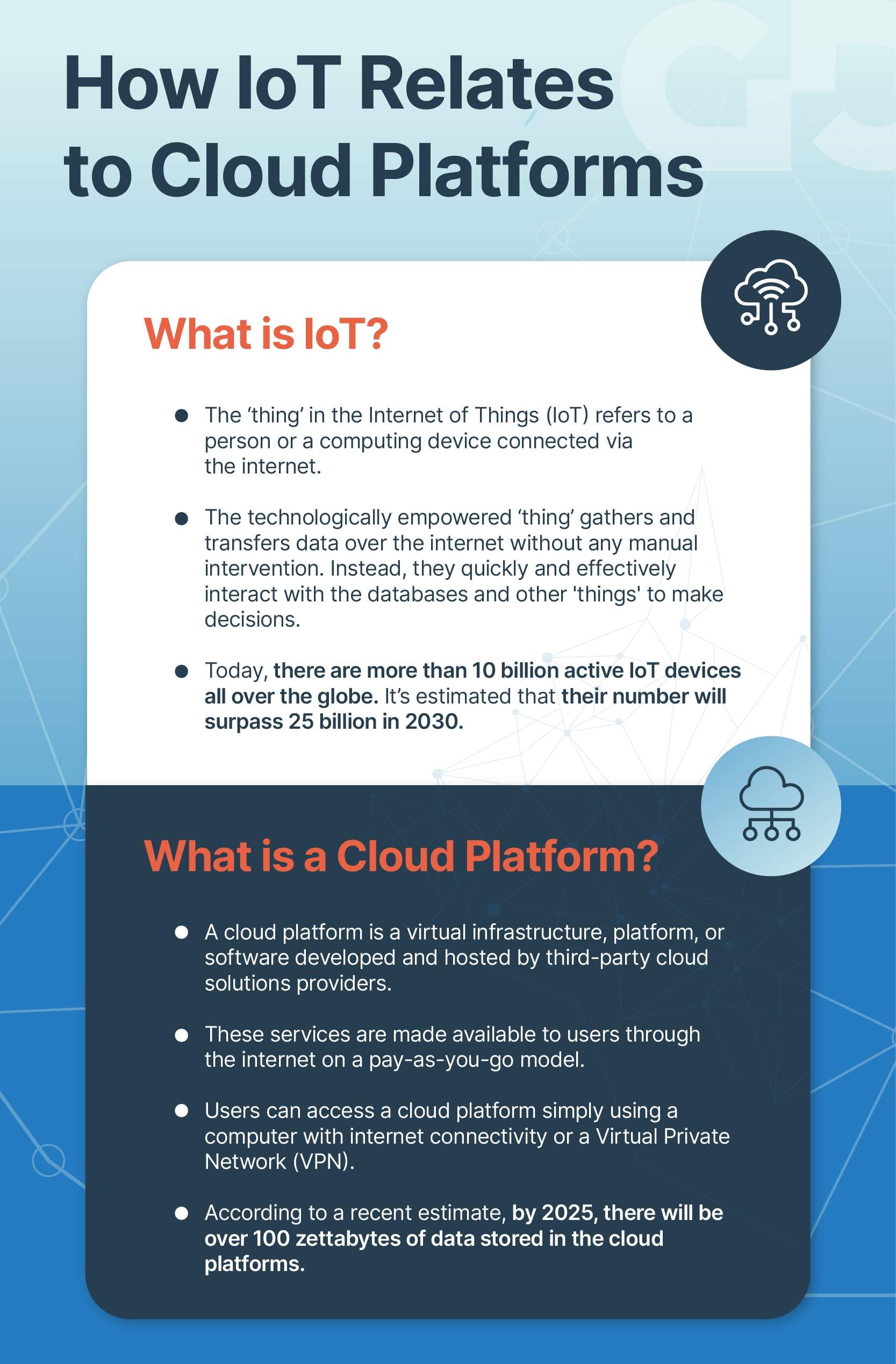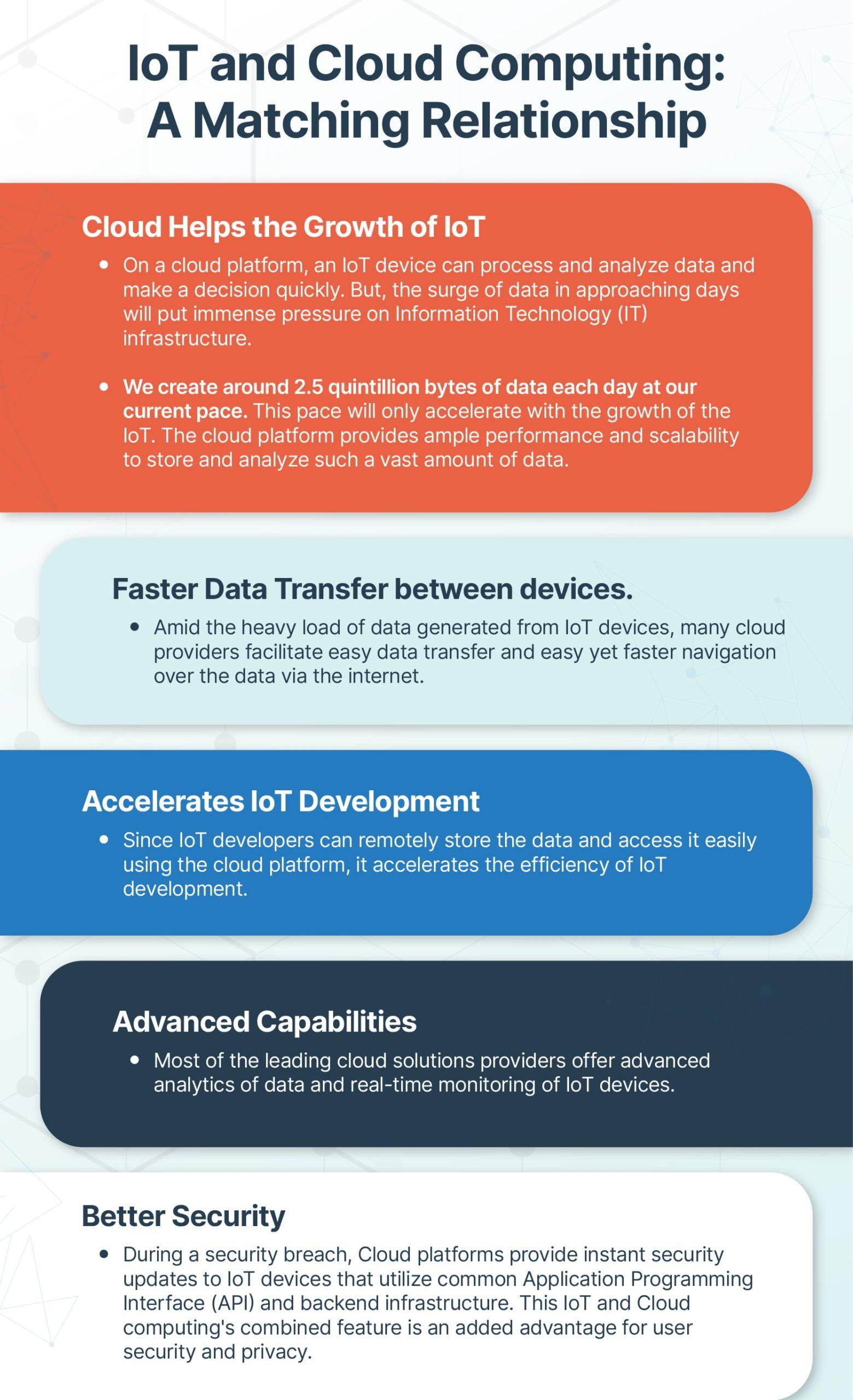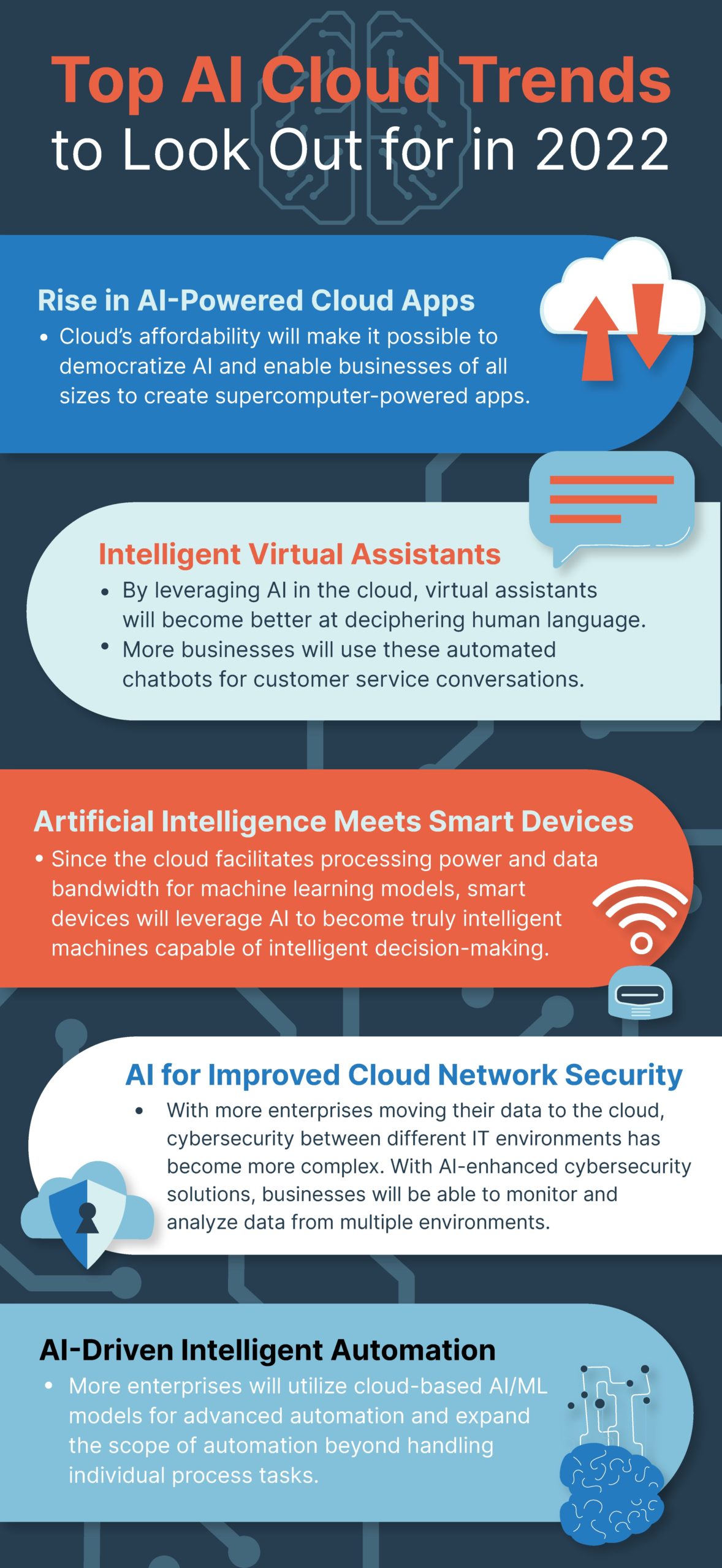In the current Information Age, we live through a world of data. Today, everything from an individual to a multinational corporation relies heavily on various types of data and its analytics for their everyday needs. Forbes put forward truly mind-boggling statistics on the amount of data we generate every single day. It estimates that we create, at our current pace, nearly 2.5 quintillion bytes of data each day. With the adoption of the Internet of Things (IoT), this pace is only accelerating.
Despite the ever-increasing volume of information being collected through data analysis today, the functioning of the human mind is the only thing that stays away from change. We think in stories and pictures. Only through the visual representation of data can we interpret it for the benefit of an individual or an organization. Here, the relevance of Data Visualization and Business Intelligence (BI) tools emerges.
What is Data Visualization?
Data visualization is the technique to provide us with a clear idea of the information by giving it visual representation through charts, maps, or graphs. It turns the data into a much more easily digestible format for the human mind to comprehend and quickly identify trends and patterns in larger data sets.
The Benefits of Data Visualization
Data visualization aids an enterprise in quickly recognizing patterns and improves its decision-making process with interactive visual representations of data. Here are some of the benefits of data visualization for a business organization.
Easy Identification of Correlations: Data visualization enables easier identification of correlations between independent variables. Thus, an enterprise can better understand different independent variables and make better business decisions.
Identifying Trends: Identifying trends is the most useful application of data visualization. The necessary data from the past and the present helps an enterprise make futuristic yet accurate business decisions.
Examining Frequency: Data visualization helps to explore the frequency of customers’ purchasing patterns and aids an enterprise in identifying the behavioral patterns of prospective customers towards its different marketing and customer acquisition strategies.
Studying the Market: Data visualization takes the data from different markets, displays it on charts and graphs, and provides an enterprise with insights into which target audiences to focus on and which ones to ignore.
Risk and Reward: Risk and reward metrics should be analyzed through tedious yet complicated spreadsheets and numbers without data visualization. Once the data is visualized, enterprises can quickly home in on areas that may require action.
Swift Reaction to the Market: An enterprise’s ability to obtain visually enriched information easily and quickly on a functional dashboard allows it to proactively respond to ever-changing market conditions and avoid making mistakes.
What are BI tools?
In the modern-day data-driven world, data comes in both structured and unstructured formats from various sources like documents, journals, books, electronic medical records (EMR), images, videos, email, and other business sources.
Business Intelligence (BI) tools are application software that collects and processes large volumes of unstructured data from internal and external sources. They amass data primarily through queries. In addition, these tools prepare data for analysis by helping an enterprise create data visualizations, dashboards, and reports. As per a recent report by Markets and Markets, the global BI market is expected to grow from $23.1 billion in 2020 to over $33 billion by 2025, at a Compound Annual Growth Rate (CAGR) of 7.6%.
Enterprises of every shape and size implement BI tools to manage, analyze and visualize business data or information. More than that, they are helpful for businesses to boost revenue streams and stay competitive in the market. Apart from the few benefits of BI tools for companies mentioned previously, there are a few more ways BI tools can add value to any business.
They are:
- Fast and accurate reporting
- Better, more rapid, and accurate decision-making
- Valuable business insights
- Competitive analysis
- Better data quality
- Increased customer satisfaction
- Identification of market trends
- Improved operational efficiency
- Lower margins
Every Business Needs Data Visualization and BI Tools
BI tools help an enterprise to carry out data visualization. So, the implementation of both these technologies in businesses empowers business leaders and employees to speed up and improve their decision-making and operational efficiency.
Enterprises must be power-packed with informed decisions and enhanced performance to stay ahead in today’s rapidly evolving yet highly competitive business world. BI tools and data visualization have all it takes to make this happen. The belief that BI tools and data visualization techniques are meant only for large businesses does not stand anymore. They are for everyone, be it a large or small enterprise.
Recent Posts
February, 2022
In today’s Digital Age, tremendous amounts of data are generated every single second from endless sources in various formats. First, there is structured data such as documents and spreadsheets, and now on the other side, there is unstructured data like emails, blog posts, videos, and even Twitter posts thrown into the vast mix of data. A recent study by Statista reveals that the total volume of data created, captured, and consumed globally reached 64.2 zettabytes in 2020. The study also predicts that by 2025, data creation worldwide is estimated to cross 180 zettabytes.
Every business organization in every shape and size all over the globe is pursuing digital transformation today. The generation of larger volumes of data together with global enterprises’ collective effort to transform themselves into digital businesses brings up storage challenges and the trouble of processing those myriad data types in vast volumes. Both these challenges put most business organizations under tremendous pressure to use a larger volume of data efficiently.
It is often legacy data architectures that stand in the way of nearly limitless opportunities to generate insights for effective business decision-making. Today’s massive surge in the volume, variety, and velocity of data baffles legacy databases, and they are bending under the heavyweight of these data challenges. Sooner or later, they may break. The only digital system that desperately needs modernizing is conventional on-premises data architecture. And the answer is data modernization.
What Is Data Modernization?
Data modernization includes extending yet retaining the value of legacy data assets, reusing the data buried in the layers of legacy databases, transforming them to updated modern data architectures, and correlating legacy data assets with the latest high-velocity data assets. It involves developing a scalable, flexible data stack, including modernizing databases without the limitations of many stages, integrations, and complexities. In other words, data modernization is simply moving data from legacy databases to modern databases. It is highly crucial for an enterprise that primarily deals with unstructured data.
Three General Data Modernization Methods
Every business organization has its strategies and objectives. Therefore, data modernization doesn’t come with a one-size-fits-all size. Anyway, enterprises can implement three general data modernization methods depending on their business strategies and objectives.
Data Migration
This method involves moving data to a different data management vendor while the source and target schemas remain the same. Data migration includes migrating code, procedures, etc., which usually brings no significant changes to the application. In addition, an enterprise can utilize automation tools for complete data migration. For instance, moving the data from Sybase, a database management system (DBMS) vendor, to save licensing costs comes under data migration.
Data Conversion
The source and target schemas are different during this data modernization process. Data conversion involves transformations during migration. It is a typical data modernization method during re-engineering an application and modernizing a legacy application. Despite the availability of Extract Transform and Load (ETL) tools, the process is manual. For example, data movement from legacy databases like Indexed Sequential Access Method (ISAM) to Relational Database Management Systems (RDBMS) comes under data conversion.
Database Upgrade
This data modernization method involves upgrading to a newer version of the database management system, which requires no transformation. The deprecated code is replaced, and an enterprise can use automation tools to complete the upgrade. For instance, upgrading from SQL Server 2005 to SQL Server 2012 can be considered a data upgrade method.
 The Benefits of Data Modernization
The Benefits of Data Modernization
Here are some of the enterprise benefits of data modernization:
- It brings scalability to an enterprise to meet growing data analytics needs
- Efficient integration of new data sources to utilize data at any scale focusing on rising data volumes from multiple data sources
- Reduces the time to derive business insights. That means it provides the ability to find value in data even from streaming real-time data quickly.
- Democratize the process of data access for every business function
- Data modernization offers substantial cost benefits over traditional data management technologies.

Data modernization enables Information Technology (IT) enterprises and business leaders to attain and interpret data to anticipate market trends and improve business outcomes. As a result, a business acquires a solid competitive advantage by deriving actionable insights from enterprise data and data modernization strategies. It also allows organizations to deliver ideal Application Programming Interface (API)-driven application integrations and prompt decision-making in a dynamic business ecosystem.
Recent Posts
February, 2022
Cloud computing is no longer an emerging buzzword. Businesses across the globe have already acknowledged the potential of this technology and are increasingly moving their workloads and applications to the cloud. Given the trends, it is sufficient to say that cloud computing and usage have become the new IT standard.
However, if you dig a little deeper, you’ll see a wide array of cloud and IT leaders expecting more specific cloud trends to come up in 2022. Here are some of the top key cloud trends that are expected to arrive with the New Year:
An Increase in Hybrid Cloud Environments
According to the Flexera 2020 Report, 93% of companies worldwide operate on a multi-cloud model, while the hybrid cloud approach is embraced by 87% of them. An increase in hybrid cloud deployment is expected due to the growth in the adoption of cloud-native infrastructure. Enterprises could make use of their cloud as well as on-premise resources with cloud-native computing and workloads gathering steam that is container-based.
In the future, the usage of the cloud must be driven by specialized circumstances and specific uses rather than one-size-fits-all or default settings. Kubernetes or other such orchestration platforms and containers or other cloud-native, cloud-centric technologies can be immensely helpful in making this process feasible.
Increased Automation in Hybrid Cloud & Multi-Cloud Settings
According to predictions made by Gartner, a minimum of 95% of the total security failures taking place in the cloud in 2020 will be caused by consumers. This, in itself, shows that automation is an integral part of voiding human error and creating multilayered defense mechanisms in cloud computing.
In addition, more and more enterprises today want to find better ways to manage multiple and complex on-premise, public, and private clouds from several vendors. Therefore, it has become an important issue pushing enterprises for large-scale adoption of hybrid multi-cloud strategies that offer higher levels of flexibility and resiliency in their choice of vendors. Enterprises also want to have the option of scalability, as well as support for a broad ecosystem of services and apps. Hence, automation is likely the next go-to strategy to deal with all the complexities.
Flexibility, Security, and Reliability in Cloud Strategies
The current trends show that more and more enterprises prioritize flexible, reliable, and secure cloud strategies for their business. According to a recent AllCloud report, 27.6% of respondents said security is essential for selecting cloud vendors. Additionally, 26.3% chose reliability, and 22.4% chose flexibility as the most important criterion.
While cost seemed to be an important criterion, in the beginning, this trend is changing now, and only 13.8% of respondents listed cost as a yardstick to choose vendors, making it the fourth important aspect in cloud strategies.
Consolidation of Cloud-Native Technologies
As cloud-native ecosystems become more mature, there are changes in the technologies and tools that are a part of this ecosystem. As a result, it is likely to see more consolidation in the future with dominant players in the field, solidifying their presence and leadership in the market.
Measurement and Monitoring Will Become a Priority for IT Leaders
With the expansion of hybrid and multi-cloud strategies, there is also a need for specialized IT teams to monitor diverse environments effectively and offer performance measurements. More workload is being deployed to cloud environments, giving rise to the need for having an IT team that constantly monitors and gathers metrics across the entire cloud environment. IT leaders will have to provide metrics to showcase a long-term business value offered by cloud spending.
5G-Enabled Edge Computing
Enterprises that regularly process huge amounts of data rely on the available resources of the cloud provider and the network bandwidth to complete the work at hand quickly. This is precisely where 5G-enabled computing can prove to be invaluable. This trend can help companies deliver broader bandwidth limits and higher speeds, enabling lower latency.
It is expected that 5G-enabled hybrid cloud ecosystems will take increased advantage of the available opportunities to perform edge computations and provide rapid data transfers to businesses worldwide.
Industry-Optimized Clouds
Industry-optimized clouds refer to a cloud computing system that addresses a particular industry’s specific needs and nuances. In 2022, industry-optimized clouds are expected to grow by leaps and bounds as organizations will not have to handle the complexities of their cloud architecture and infrastructure. This will go a long way to providing them with ease of administration and management.
Wrapping Up
2022 is shaping up to be the year of massive cloud computing. From businesses deploying multi-cloud strategies to embracing secure cloud solutions and advancement in encryption to protect their data, cloud computing technologies are likely to accelerate the process of digital transformation in organizations across the globe.
Recent Posts
February, 2022
The adoption of IoT (Internet of Things) has rapidly changed today’s business world. IoT predominantly helps to capture vast volumes of data from multiple sources. However, the processes of collecting, processing, and analyzing the tremendous flow of data from countless IoT devices have turned complex.
The data-driven nature of present-day businesses requires investments in innovative technologies that can turn this complex process into a simplified yet easily comprehensible one. This is the point where the convergence of IoT and Artificial Intelligence (AI) or AIoT can play a major role in redefining how businesses and economies work.
While IoT comprises devices interacting over the internet, the Machine Learning (ML) capabilities of AI make IoT devices learn from the data they collect. AI-enabled intelligent IoT devices can simulate smart human (at times, superhuman) behavior and decision-making patterns with little or no human interference.
The Rising Trend of IoT and AI Convergence
As a prominent part of their business processes, several businesses worldwide have already embraced the combination of IoT and AI. A 2019 survey reveals that respondents that heavily use AI in their IoT operations exceeded their value expectations. Similarly, a PwC 2019 IoT survey shows that 97% of the companies that have integrated IoT with other technologies such as AI and Blockchain were able to reap the benefits through this investment.
Start-ups and large enterprises alike prefer AI technology to bring out the full potential of IoT. The major leading providers of IoT platforms like Oracle, Amazon, and Microsoft have begun incorporating AI technology into their IoT applications already.
From robotics, self-driving cars and advanced analytics to Industry 4.0 Digital Twins and smart IoT devices, AI-powered IoT is increasingly becoming important across a range of business areas. As a matter of fact, the next evolutionary step for IoT is to embrace AI and drive intelligent automation and decision-making.
How the Blend of IoT and AI Works
At its heart, IoT is all about machines with sensors implanted. These machines, over internet connectivity, transmit streams of data. All IoT devices inevitably follow five basic steps. They are:
- Create
- Communicate
- Aggregate
- Analyze
- Act
The ‘Act’ step solely depends on the ‘Analysis’ step that immediately precedes it. Therefore, the efficiency of an IoT device is determined by its Analysis step. This is the point where AI technology portrays a significant role. While IoT devices provide a multitude of data, AI offers both creativity and context to make smart actions. Therefore, businesses can make smart decisions when an unlimited stream of data delivered by IoT devices is analyzed by AI technology.
Surprising Benefits of AI-Powered IoT
Combining two disruptive technologies like AI and IoT brings a broader range of benefits for both businesses and consumers alike. Some of the most popular benefits are as follows:
Enhanced Efficiency in Enterprise Operations
ML capabilities of AI can crunch huge volumes of data from IoT devices and detect patterns that can’t be done with simple computing devices. It can also predict the enterprise operation conditions and bring solutions for ideal outcomes. Therefore, redundant and time-consuming business tasks are eliminated.
An Efficient Risk Management System
AI-Powered IoT helps businesses analyze and predict a broader set of risks and automate timely responses. It ensures efficient handling of financial loss, employee safety, and cyber-attacks.
Brings Out Innovative Products And Services
A prominent AI technology like Natural Language Processing (NLP) is getting better at letting people communicate easily with computing devices. This leads to the creation of innovative products and services yet enhances the existing ones.
Enhanced Scalability
The AI-powered IoT ecosystem analyzes and crunches the data from devices ranging from smartphones to high-end computing devices to low-end sensors. This process can make large volumes of data handy and make it easier to share across a larger network of IoT devices.
Eliminates Unpredictable Yet Expensive Downtime
In some industrial sectors like offshore oil and gas, as well as industrial manufacturing, unpredictable equipment failures can bring expensive downtime. AI-enabled IoT allows you to predict equipment breakdowns and schedule timely maintenance procedures.
Generally, IoT combined with AI technology can lead the path towards an advanced level of business solutions and user experiences. To achieve greater value from your enterprise network and to transform your business, you should undeniably integrate AI with IoT devices.
Recent Posts
February, 2022
As a trending technology, AI has become a crucial part of various business organizations and industries. According to statistics, the global AI market value will likely reach $190.61 billion by 2025. This alone shows the immense reach of this technology throughout the globe. However, with the cloud, AI is setting the stage for higher efficiency, flexibility, and strategic insight for enterprises.
Often termed as AI Cloud or Cloud AI, it combines machine learning capabilities of artificial intelligence with already established cloud-based computing environments. In 2020, the Cloud AI Market was valued at $5.2 billion, which is expected to reach $13.1 billion by 2026. Moreover, Gartner predicts that by 2023, cloud-based AI will increase 5X from 2019, making AI one of the top cloud services.
With so much happening already in the AI Cloud space, let’s look at some of the major ways AI will influence the cloud landscape in the coming year.
AI Cloud Trends for Businesses to Look Out for in 2022
The Rise in AI-Powered Cloud Apps
- Cloud’s affordability will make it possible to democratize AI and enable businesses of all sizes to create supercomputer-powered apps.
Intelligent Virtual Assistants
- By leveraging AI in the cloud, virtual assistants will become better at deciphering human language.
- More businesses will use these automated chatbots for customer service conversations.
Artificial Intelligence Meets IoT: AIOT
- Since the cloud facilitates processing power and data bandwidth for machine learning models, IoT devices will leverage AI to become truly intelligent machines capable of intelligent decision-making.
AI-Driven Intelligent Automation
- More enterprises will utilize cloud-based AI/ML models for advanced automation and expand the scope of automation beyond handling individual process tasks.
AI for Improved Cloud Network Security
- With more enterprises moving their data to the cloud, cybersecurity between different IT environments has become more complex. With AI-enhanced cybersecurity solutions, businesses will be able to monitor and analyze data from multiple environments.
Takeaway
In 2022, AI is expected to continue transforming into the most transformative technology that has ever been developed by humanity. According to Google’s CEO, Sundar Pichai, its impact is expected to be greater than that of electricity or fire on the development of humankind.
Sources Used
https://www.semrush.com/blog/artificial-intelligence-stats/ https://www.mordorintelligence.com/industry-reports/cloud-ai-market https://www.gartner.com/smarterwithgartner/gartner-predicts-the-future-of-ai-technologies https://www.linkedin.com/pulse/future-trends-ai-analytics-cloud-bernard-marr/ https://www.monroyits.com/2020/03/12/how-were-expecting-artificial-intelligence-to-influence-cloud-computing-in-2020/
https://www.weforum.org/agenda/2021/03/ai-is-fusing-with-the-internet-of-things-to-create-new-technology-innovations/
https://www.datamation.com/security/artificial-intelligence-ai-in-cybersecurity-trends/ https://www.cnbc.com/2018/02/01/google-ceo-sundar-pichai-ai-is-more-important-than-fire-electricity.html
Recent Posts
February, 2022
Best Practices for Integrating ML in Your Enterprise
In the present times, Machine Learning (ML) models help solve a wide array of very specific business challenges faced by organizations across industries. Hence, it is important to choose an ML model that aligns with the problem you need to solve. Finally, the approach you choose to build your ML model must be productionable and easily executable for long-term results.
Check out this infographic that highlights the best practices that you can follow when integrating ML models with your business applications.
Best Machine Learning Practices for the Cloud
Cloud or On-Premise?
Choosing the cloud means saving time, easy scaling, and low entry costs. Moreover, there are big players such as Microsoft Azure providing services that allow for easy scaling.
Use Checkpoints
Having checkpoints after every training and evaluation stage using parameters and hyperparameters can help immensely.
Gather Historical Data from the Current Systems
Gathering already existing data can help you understand where optimization is necessary to give you the best results.
Create a Business Objective & Problem Statement
Having an objective or a problem statement helps prioritize. It is a metric that you can optimize and will show you progress.
Use Easily Attributable & Observable Metrics
Using simple metrics, in the beginning, is a great idea. While indirect effects offer great added value in the long run, it is better to start small.
Pass Sanity Checks Before Deploying The Final Model
Testing is the key before you deploy your machine learning model. You can even automate the process and check the generated metrics later to see if it gives you the expected results. Some standard metrics you can deploy are f1 score, accuracy, or recall.
Use Kubernetes & Containers in Deployment
Technologies such as Kubernetes and Docker help you encapsulate different parts of the system. That helps in making incremental improvements, and the scaling process becomes easier.

Takeaway
Deep Learning and Machine Learning have come a long way from being mere buzzwords. Today, they are an integral part of startups and businesses worldwide. Still, many organizations find ML integration to be challenging. However, following these best practices can help them take off in the right direction to eliminate the risks early in the production process.
Sources Used
https://towardsdatascience.com/mlops-practices-for-data-scientists-dbb01be45dd8
https://www.cio.com/article/3623353/best-practices-to-embrace-an-mlops-mindset.html
Recent Posts
February, 2022
Cloud services have certainly grown in the last several years however there are 3 main platforms that stand out amongst the crowd. There is a fierce three-way race between Amazon Web Services vs. Microsoft Azure vs. Google Cloud Platform (GCP). These have become the top cloud companies and have a commanding lead in the markets for Infrastructure as a Service (IaaS), and Platform as a Service (PaaS).
This Gartner magic quadrant shows the dominant position of AWS vs. Microsoft Azure vs. Google Cloud Platform. However, you should expect this graph to change significantly over the years as Alibaba Cloud, Oracle Cloud, and the IBM Cloud will innovate and keep up with the competition and evolve.
AWS has always dominated the cloud space. According to a 2020 report from Synergy Research Group, “Amazon growth continued to closely mirror overall market growth so it maintained its 33% share of the worldwide [cloud] market. Second ranked Microsoft again grew faster than the market and its market share has increased by almost three percentage points in the last four quarters, reaching 18%.”
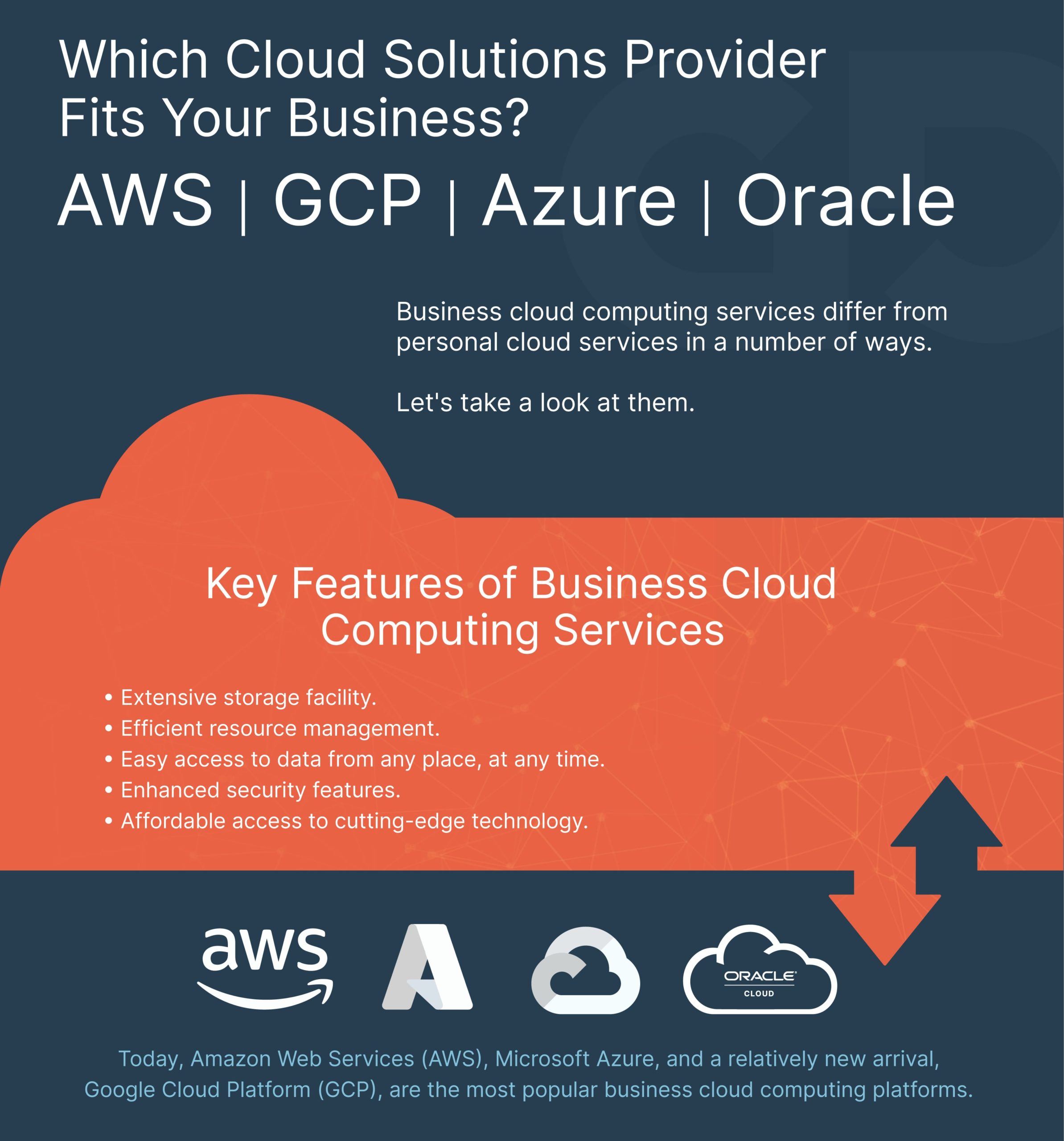
Meanwhile, Microsoft is particularly strong in SaaS, while Google Cloud, with its strength in artificial intelligence, is positioned for aggressive growth as the AI market grows – and is known for offering discounts.
Let’s take a closer look at the top cloud providers going into 2022.
AWS – Amazon Web Services
AWS being the first to offer true cloud services is the dominating provider. A subsidiary of Amazon and founded in 2006, AWS is a leader amongst cloud service providers. It is one of the first cloud computing platforms that became widely available. Amazon is an IaaS market leader, holding about 31% of the cloud market share. In 2020 the financial results for the entire year exceeded the company’s expectations. Some of this can be attributed to the massive need for cloud services as the pandemic took hold. AWS reported a revenue of $45 billion in 2020, which was almost 30% more than the revenue announced in 2019.
Amazon Web Services offers a broad set of global cloud-based products including compute, storage, databases, analytics, networking, mobile, developer tools, management tools, IoT, security and enterprise applications. These services help organizations move faster, lower IT costs, and scale. AWS is trusted by the largest enterprises and the hottest start-ups to power a wide variety of workloads including: web and mobile applications, game development, data processing and warehousing, storage, archive, and many others.

Where AWS is Strong – (Pros)
When it comes to Iaas and PaaS, AWS has the largest market share and leads in the vast majority of cloud products and services around the globe. A big reason for its popularity is undoubtedly the massive scope of its operations. AWS has a huge and growing array of available services, as well as the most comprehensive network of worldwide data centers. The Gartner report summed it up, saying, “AWS is the most mature, enterprise-ready provider, with the deepest capabilities for governing a large number of users and resources.”
The company has a strong managed service provider network, with 67 premier consulting partners worldwide. Enterprises perceive AWS as a strategic provider of cloud infrastructure. AWS delivers end-to-end solutions, starting from servers to embedded operating systems in Edge devices, and the comprehensive technological stack in between.
Where AWS is Weak – Cons
It is known that one of Amazon’s big weaknesses relates to cost. While AWS regularly lowers its prices, many enterprises find it difficult to understand the company’s cost structure and to manage those costs effectively when running a high volume of workloads on the service. At times Amazon has proclaimed price reductions, the price for some services, like the AWS Compute service, has not become cheaper since 2014. AWS optimizes their best cloud services, and if the customer is tied to the Amazon products, it may not be easy to switch to another service provider although the top 3 majors have made it easier to be friendly with each other in the past few years with cloud agnostic technology coming into favor.
AWS Benefits
Without a doubt, AWS is the most mature and enterprise-ready provider with a tremendous track record of customer success, starting from small and medium businesses to large enterprises. Enterprises using Amazon consistently benefit by being early adopters of new services. Amazon Web Services offers over 100 products that users can test for free. The company provides a set of database, developer and mobile tools and services that are always free. In addition, AWS offers a 1-year trial for certain products and short free trial services for ML, analytics, compute, security and compliance.
Microsoft Azure
Microsoft came later to the cloud market, but gave itself a jump start by essentially taking its on-premises software – Windows Server, Office, SQL Server, Sharepoint, Dynamics Active Directory, .Net, and others – and repurposing it for the cloud.
Microsoft Azure holds a strong second place after AWS. The company provides a broad range of enterprise-focused services. Every quarter Microsoft Azure releases tens of products, services and enhancements resulting from research and development initiatives, made over multiple years. Azure offers the ability to instantly provision computing resources on-demand and is the best-in-class in the hybrid cloud among other cloud vendors.
Microsoft Azure’s market share among IaaS cloud providers is 20%. In Q2 2021, Microsoft Azure’s revenue reached 50% growth when compared to the previous quarter, and resulted in $17 billion in earnings for the company. The accelerated demand for Microsoft Azure offerings has increased by 34% year over year, as stated in the company’s Q2 2021 financial report. Microsoft Enterprise Mobility (service including Microsoft products as Azure Active Directory, Endpoint Configuration Manager, Microsoft Intune, Microsoft Defender, etc.) grew 29% to 163 million seats in Q2 2021.
With over 600 services, Azure has a large layout of cloud offerings. Azure offers VMs as a part of its IaaS offering, Active Directory to synchronize on-premise directories, and enables single sign-on. The company also provides mobile engagement with real-time analytics and tracking of user behaviors and storage services, as well as data management tools such as Azure Data Explorer, Azure SQL Database, Serverless, CDN, Azure AI, Azure Workbench, Azure IoT and other services.
Where Microsoft Azure is Strong – Pros
A big reason for Azure’s success: so many enterprises deploy Windows and other Microsoft software. Because Azure is tightly integrated with these other applications, enterprises that use a lot of Microsoft software often find that it ]makes sense for them to use Azure. This builds loyalty for existing Microsoft customers. Also, if you are already an existing Microsoft enterprise customer, expect significant discounts on service contracts.
There are some good use cases for Azure due in part to the wide service offerings that Microsoft provides. Azure has partnerships with Oracle, VMware and SAP, further extending its capabilities. Microsoft Azure has a strong managed service provider network with 32 partners on its list. On top of that, Microsoft leads the PaaS segment of cloud service providers with a suite of tools, including Azure DevOps and Visual Studio Codespaces (the tool that enables the use of a public cloud and developer tools, such as Visual Studio Code).
Where Microsoft Azure is Weak – Cons
According to Gartner, there is fault with some of the platform’s imperfections. “While Microsoft Azure is an enterprise-ready platform, Gartner clients report that the service experience feels less enterprise-ready than they expected, given Microsoft’s long history as an enterprise vendor,” it said. “Customers cite issues with technical support, documentation, training, and breadth of the ISV partner ecosystem.” These are issues that Microsoft has been trying to improve upon nevertheless customers are still mentioning these issues.
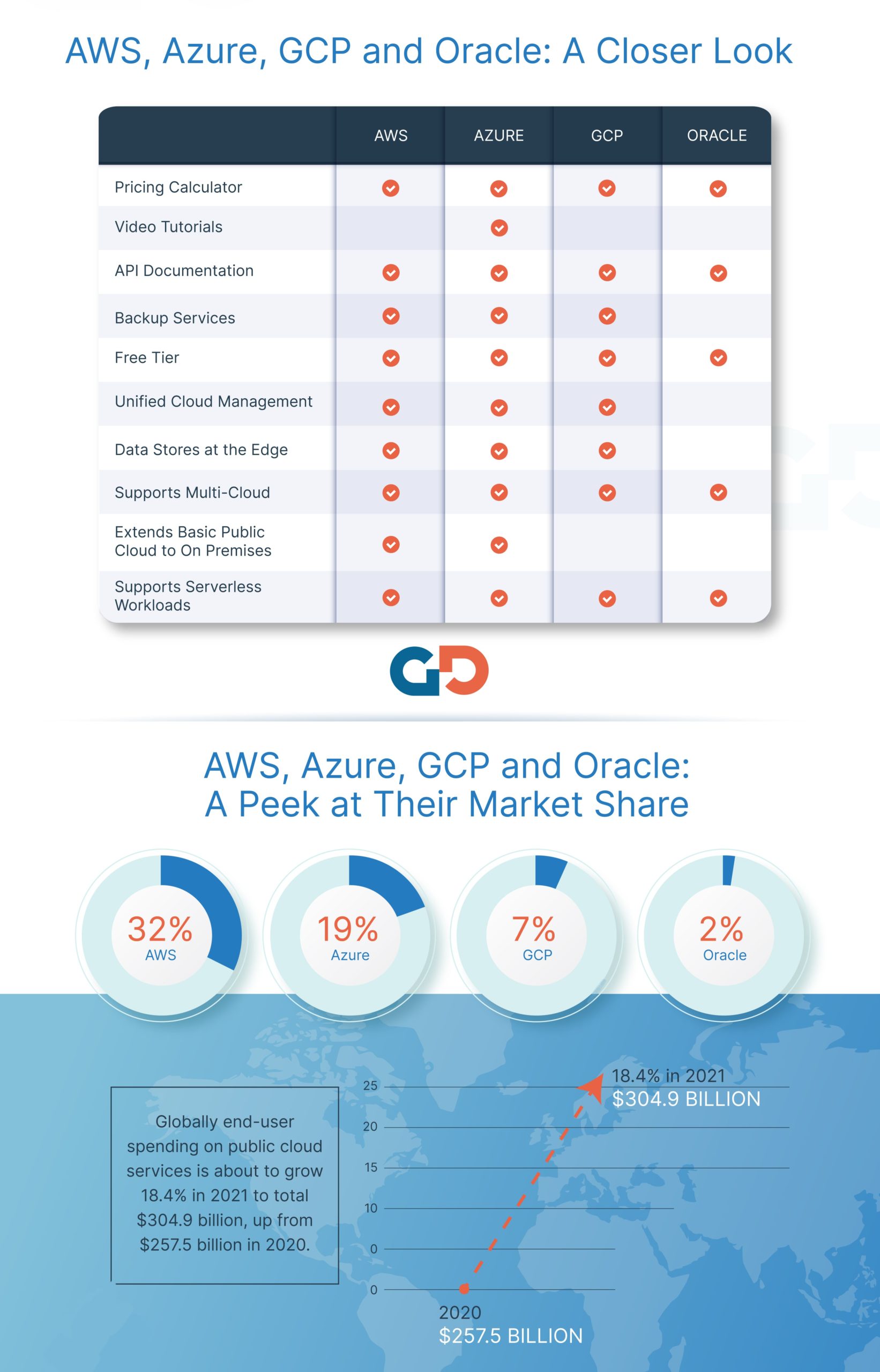
Microsoft support is quite expensive. In addition, Microsoft Azure has a lower ratio of availability zones than other cloud service providers. There’s still room for resilience-centered reengineering efforts and service availability improvements though. On top of that, Azure doesn’t provide any form of guaranteed capacity to its customers, and even pre-paid contracts and reserved instances are not capacity guarantees. During the COVID-19 spike, some Microsoft Azure customers were not able to provision the cloud capacity they had already paid for. There is where AWS outshined its competitors.
Azure Benefits
Azure is particularly well suited for organizations using Microsoft services. Microsoft Azure provides consistent services on the cloud and is a strong player in all use cases. This includes edge and comprehensive cloud offerings, in which other cloud vendors are not that well-versed. Microsoft Azure offers a $200 credit for 30 days to new users. As mentioned earlier, Azure offers the ability to instantly provision computing resources on-demand and is the best-in-class in the hybrid cloud among other cloud vendors.
Google Cloud Platform (GCP)
Google Cloud has third place on Gartner’s Magic Quadrant of cloud providers, after AWS and Microsoft Azure. In the last year, Google Cloud has substantially increased its hybrid and multi-cloud workload using Antos which allows users to manage workloads on Google, AWS and Azure. Besides, Firebase, a Google-purchased cloud mobile Backend-as-a-Service (BaaS), has grown quite rapidly and became widely adopted by developers. Firebase remains a highly-demanded BaaS platform despite it being run on the top of Google Cloud.
The market share of Google Cloud in infrastructure, as a service market, is 7%. In 2020 Google was investing heavily in sales staff, resulting in an operating loss of $5 billion and an overall $13 billion revenue. However, these steps were needed to scale the business and improve its profitability.
The Google Cloud platform offers 100 products that can be grouped into six categories: storage, databases, computing and hosting (servers, containers VMs), networking (VPC, load balancing, cloud DNS), big data (Big Query for data analysis, Dataflow for batch and streaming data processing), and machine learning (AI platform).
Where Google Cloud is strong – Pros
Google Cloud stands out in big data, machine learning and data science capabilities with its products like TensorFlow, ML Kit and Google Datasets. It offers an end-to-end AI platform built on the latest technologies and is enabled by tools like TensorFlow and TPUs (Tensor Processing Unit – an AI accelerator application-specific integrated circuit).
Google has a strong offering in containers since Google developed the Kubernetes standard that AWS and Azure now offer. GCP specializes in high compute offerings like Big Data, analytics, and machine learning. It also offers considerable scale and load balancing – Google knows data centers and fast response time.
Where Google Cloud is weak – Cons
Google has challenges with positioning itself as an enterprise-class IaaS solution. Its offerings have not yet reached the level of enterprise maturity that AWS and Microsoft Azure provide, and some of them are not yet as fully packaged as the ones offered by Google Cloud’s rivals. Likewise, Google Cloud has a smaller pool of well-versed managed service providers than other cloud vendors. Google is a distant third in market share, perhaps because it doesn’t have the traditional relationship with enterprise customers. However, it is quickly expanding both its offerings and its footprint of global data centers.
Gartner said that its “clients typically choose GCP as a secondary provider rather than a strategic provider, though GCP is increasingly chosen as a strategic alternative to AWS by customers whose businesses compete with Amazon, and that are more open-source-centric or DevOps-centric, and thus are less well-aligned to Microsoft Azure.”
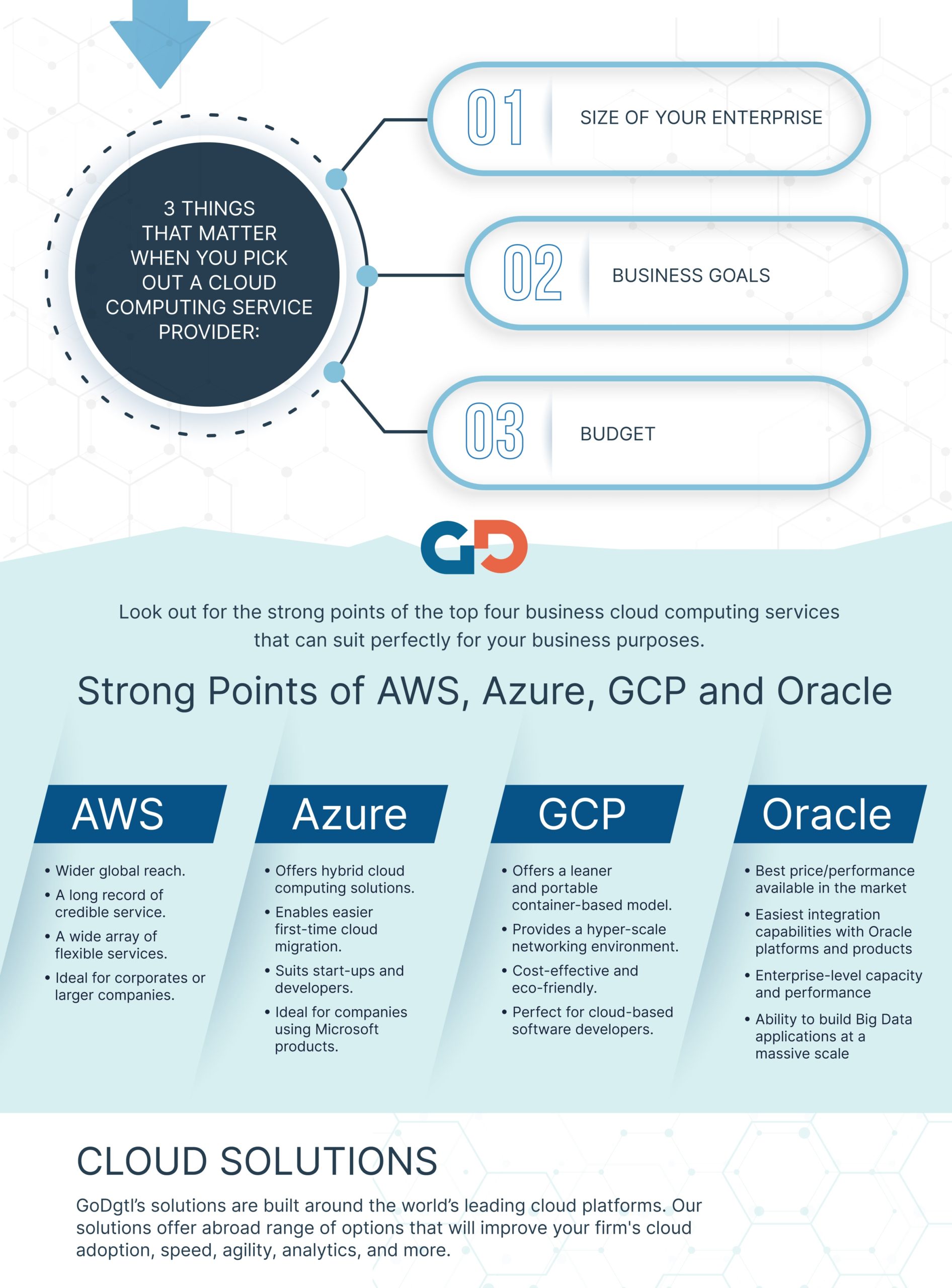
Google Cloud Benefits
Research shows that Google Cloud customers don’t need to be afraid of the vendor lock-in since the main Google offerings are open source (Kubernetes, TensorFlow and Istio) which eventually became industry standards. These services have significantly influenced the deployment, scaling and management of enterprise IT in the cloud. As the cloud industry and platforms evolve towards cloud agnostic offerings, Google is increasing, though slowly, its market footprint every year by convincing customers with its enterprise cloud offerings which are starting to stand up to industry standards in a convincing way.
Where Are the Trends Going into 2022?
According to predictions from Gartner, global spending on cloud services is expected to reach over $482 billion in 2022, up from $313 billion in 2020. Cloud computing infrastructure is the backbone of the delivery pipeline of just about every digital service, from social media and streaming entertainment to connected cars and autonomous internet of things (IoT) infrastructure. New or upcoming ultra-fast networks like 5G and Wi-Fi 6E don’t just mean more data will be streamed from the cloud; they mean new types of data can be streamed.
The pandemic brought about an explosion in cloud usage for employee remote services and those trends will continue to evolve and enterprise migrations will become more focused and projects will begin to use hybrid cloud. The distinction between public and private cloud will become less as options for ‘best of both worlds’ start to become frequent offerings.
How GoDgtl Partners with AWS, Azure, and Google Cloud Services
GoDgtl brings a team of experienced cloud experts who work directly with AWS, Azure, and Google to bring value and real solutions for your cloud projects. With direct access to resources and in-house cloud consulting talent, GoDgtl is ready to guide you through your cloud (security) journey regardless of where you are on that path. Whether it’s more knowledge-based information on cloud topics such as security, or governance and compliance or basic cloud migration aspects or even if an assessment is needed, GoDgtl can provide a roadmap for your path to project completion and success.
Sources:
https://www.avenga.com/magazine/top-cloud-service-providers/
https://www.datamation.com/cloud/aws-vs-azure-vs-google-cloud/
Recent Posts
February, 2022



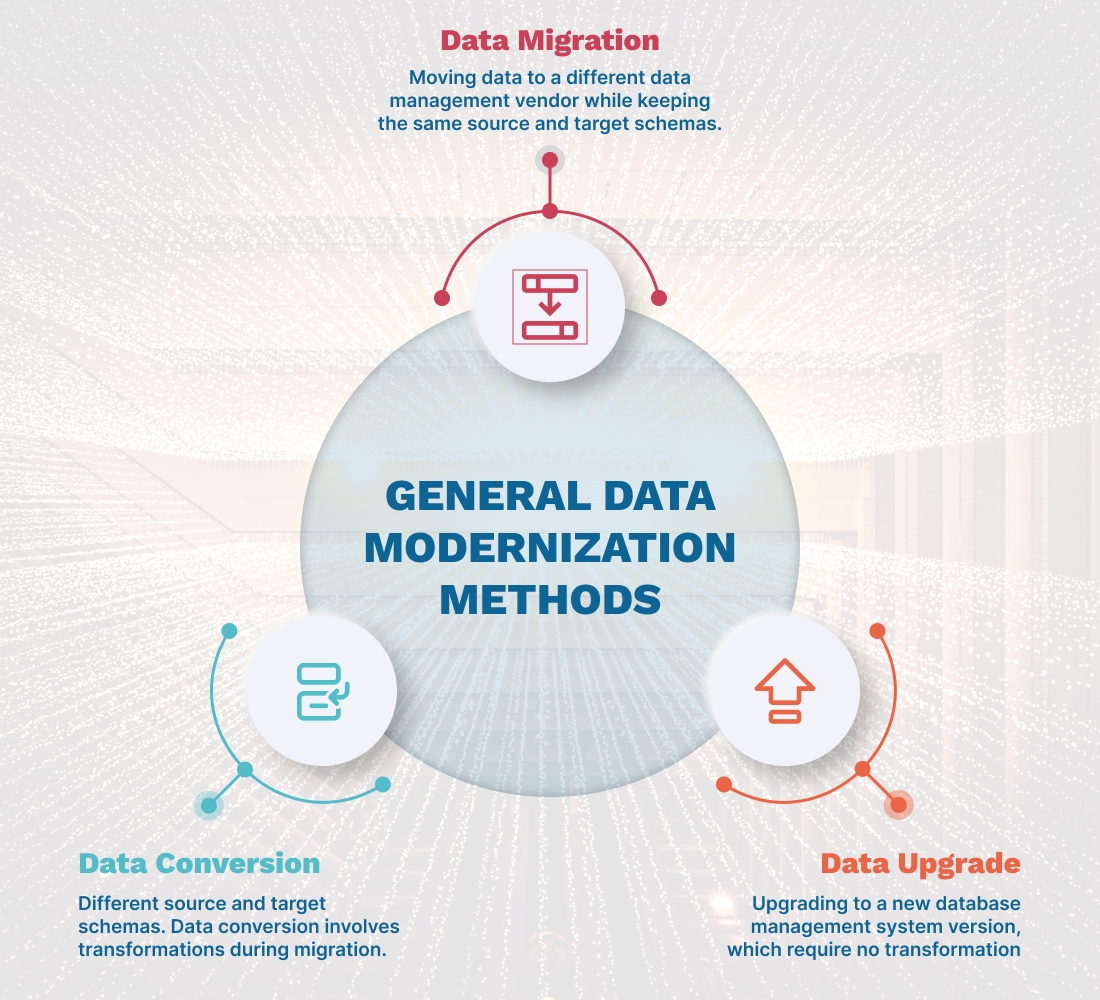 The Benefits of Data Modernization
The Benefits of Data Modernization

